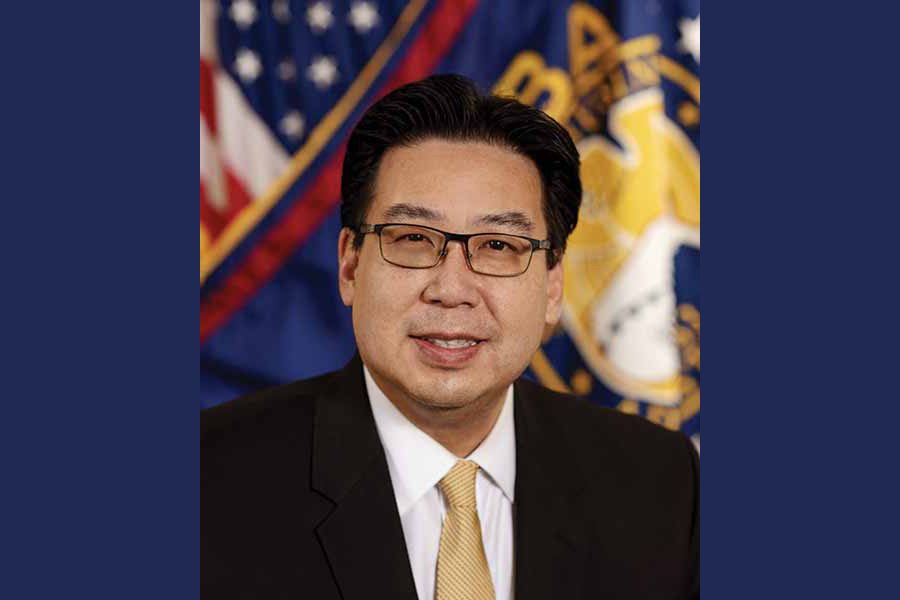
Home » SBA pivots to recovery after pumping $11B into Washington businesses
SBA pivots to recovery after pumping $11B into Washington businesses

June 13, 2022
The U.S. Small Business Administration is refocusing its work after an all-hands-on-deck campaign delivered billions in pandemic relief to American businesses, including $11 billion in Washington state.
It is a “staggering” figure, said Mike Fong, the newly appointed director for Region X, covering Washington, Oregon, Idaho and Alaska.
In Washington, SBA awarded 180,000 grants and loans through the Paycheck Protection Program, Economic Injury Disaster Loans (EIDL), Restaurant Revitalization Fund and other programs designed to support businesses through pandemic-related lockdowns.
By comparison, the SBA typically issues about 3,500 loans a year in the entire region.
Fong, who grew up in Spokane where his family owned a Chinese restaurant, took office in January and is devoting his first months on the job to touring the region.
The tour brought him to Pasco on May 18, when he attended a Tri-Cities Hispanic Chamber of Commerce luncheon event with Joel Nania, SBA’s Spokane office manager.
He said SBA’s message is that it is pivoting to support small businesses through the recovery, acknowledging that many businesses did not survive.
“How do we capitalize on what we learned?” he asked during his visit. The biggest lesson concerned technology. The web portal businesses used to apply for EIDL loans was cumbersome and crashed. Offering assistance and streamlining the system helped.
Looking ahead, that means helping small businesses embrace the technology that can help them focus on their business and not management tasks.
SBA rose to prominence through its significant role in distributing federal support dollars. It wants to use that awareness of its mission to reach a broader audience, with a focus on businesses owned by minorities, women and veterans.
“The SBA is still here. We want to assist small businesses as they shift to recovery,” Fong said.
Equity is a priority for the Biden-Harris administration, which sees opportunity to expand small business ownership through federal spending. The government spent $600 billion on goods and services in its 2020 fiscal year.
Its goal is to increase the share of federal procurement dollars going to small and disadvantaged businesses by half, to 15% of the total, by the 2025 federal fiscal year.
“We want to make sure tools are available to communities that don’t always have that,” Fong said. “SBA programs offer access to capital as well as connections to advisors who can help entrepreneurs focus on the best practices necessary to soar, including using technology to manage their businesses.”
Services are free, or, as he noted, prepaid through taxes.
The federal government spends about $25 billion annually in Region X, a figure that covers everything from defense to energy initiatives such as the Hanford nuclear reservation site and Pacific Northwest National Laboratory.
Of that, about $8 billion involves small business.
Despite the government’s massive appetite for goods and services, Fong said disparities remain when it comes to who gets federal contracts.
- Black-owned businesses receive 1.9% of federal procurement spending and represent 2% of all firms and 8.9% of all Americans.
- Hispanic-owned businesses represent 12.8% of all firms and 2.1% of procurement spending
- Rural businesses account for 11.4% of the nation’s total and 1.8% of procurement spending.
- Women-owned businesses represent 37.7% of the total and 5.7% of procurement spending.
- Asian American and Pacific Islander-owned businesses account for 7.7% of the total and 3.2% of procurement dollars.
- Native American-owned business account for 0.2% of businesses and 2.9% of spending (the only one with over-representation)
Americans are embracing their inner entrepreneurs as the pandemic lingers, with 5.4 million new applications tallied in 2021, a record.
The numbers were particularly strong for Hispanic entrepreneurs, who continue to create businesses faster than any other group in the past decade.
“We want to be there to support that entrepreneurial spirit,” he said.
Contact SBA Region X: 206-553-5231, sba.gov/offices/regional/x.
For more information
To reach the U.S. Small Business Administration’s Region X office, which includes Washington, Oregon, Idaho and Alaska:
Call: 206-553-5231
Go to: sba.gov/offices/regional/x.
Local News
KEYWORDS june 2022





